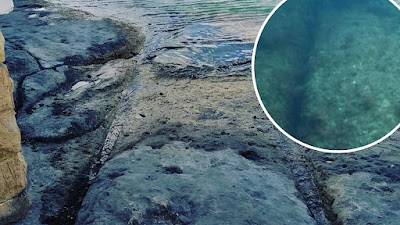Malta, with its captivating Mediterranean waters and abundant marine life, offers a unique adventure for underwater enthusiasts. Beyond the picturesque scenes, explorers can uncover the enigma of Malta's underwater cart ruts and temples. These parallel grooves, found across the Maltese Islands, raise questions about their origin, purpose, and how they ended up submerged beneath the sea. With over 150 cart rut sites scattered throughout Malta, these ancient tracks continue to intrigue researchers and divers alike.
The cart ruts, distinct parallel grooves, are older than the famous megalithic buildings of Malta. They are found both on land and underwater, suggesting that some of these tracks were engulfed by rising sea levels or geological shifts over time. Some cart ruts mysteriously lead off cliffs, disappearing into the depths of the sea, adding to the intrigue surrounding their purpose and destination.
Malta and Gozo boast an intricate network of parallel tracks cut into limestone rocks, forming the enigmatic cart ruts. These tracks, resembling paths left by carts, can reach depths of up to 60 cm, with an average distance of 110 to 140 cm between them. Some tracks intersect or branch out, creating a complex pattern that evokes images of a vast railway switching yard. The prevailing belief is that these tracks emerged around 2,000 BC, following the arrival of settlers from Sicily during the Bronze Age.
Scholars have proposed various theories to explain the creation of the cart ruts. One prevalent idea suggests that heavy carts or sledges used for transporting materials, such as stones from quarries or megalithic blocks for temple construction, caused the grooves to form. Over time, the weight of the cargo and the repetitive movement eroded the topsoil, gradually carving tracks into the limestone bedrock. Another hypothesis proposes that the cart ruts served as irrigation channels, distributing water from springs to agricultural terraces. However, the parallel nature of the tracks poses a challenge to the irrigation theory.
One particularly intricate and extensive network of cart ruts is located at "Misrah Ghar il-Kbir" near the Dingli Cliffs. Dubbed "Clapham Junction" by an Englishman named David Trump, it resembles a bustling railway station. The cart ruts crisscross the landscape, spanning an area of approximately 8 hectares. Some tracks even lead toward ancient quarries, lending support to the theory that these tracks were created by sleds used to transport rocks.
Unearthing the secrets of Malta's underwater cart ruts and temples unveils a captivating chapter of the island's history. These enigmatic parallel grooves, both on land and submerged beneath the sea, continue to baffle experts and intrigue adventurers. As scholars grapple with theories of their origin and purpose, the allure of these ancient tracks persists, drawing divers and researchers into their mysterious depths. Malta's underwater cart ruts and temples stand as a testament to the island's rich past, inviting us to explore the enigma and marvel at the enduring mysteries that lie beneath the crystal-clear Mediterranean waters.
Articles you might like:



No comments:
Post a Comment